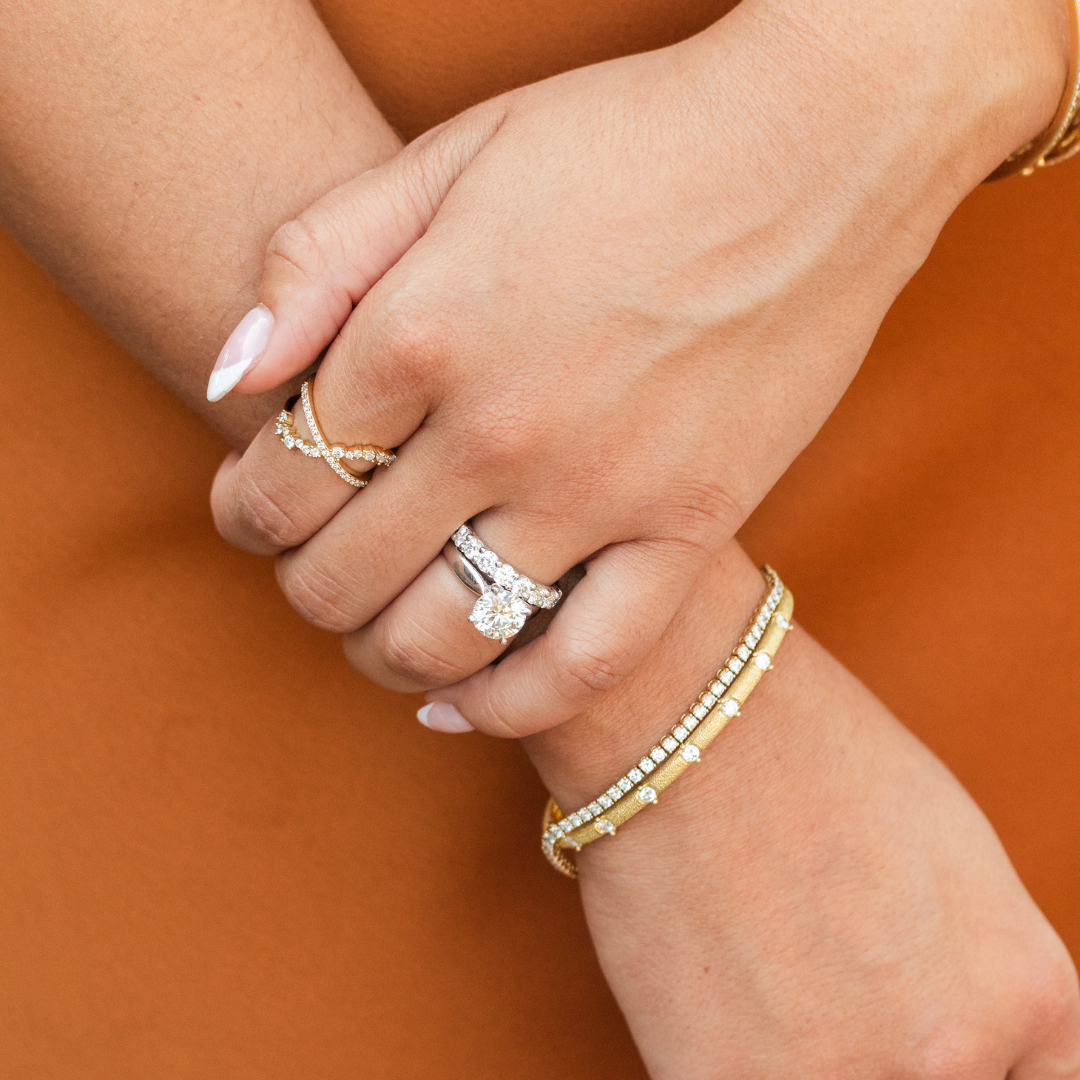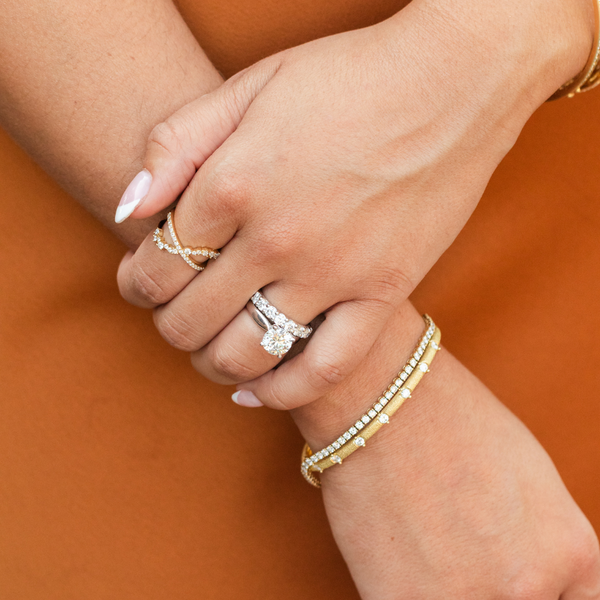
“As long as it sparkles,” some people say, “that’s all that matters.” And if sparkling is all you’re looking for, then any stone will do. But instinctively you know there’s “sparkle” and then there’s sparkle. And that’s just one of the many differences between diamonds and cubic zirconia.

Diamonds are made of pure carbon formed over 100 miles below the surface of the earth. The intense pressure and heat arrange the atoms in a crystal structure so tight it creates the hardest natural material on Earth.
Cubic zirconia is a manufactured crystal made from a combination of zirconium and two oxygen atoms (ZrO2). Cubic zirconia, or CZ, is also hard usually colorless. Because of that, it has a visual similarity to diamonds.
How to tell the difference
While it might take a microscope to tell two diamonds apart, you can tell the difference between a diamond and CZ with your naked eye. Diamonds give off a brilliant white light, while a cubic zirconia gives off a rainbow of colors. If you’re seeing scratches, you’re likely looking at a cubic zirconia, whereas diamonds won’t scratch unless they have been cut using professional tools. Another way to tell is the weight. Holding a diamond in one hand and a CZ in the other, the diamond will be noticeably heavier. Diamonds are dense, where cubic zirconia feels more like a piece of glass. The difference will also be evident in the price. Diamonds are rare, whereas cubic zirconias are made plentiful and will be substantially lower in price.
Where does cubic zirconia come from?
Cubic zirconia is made in a lab when pure zirconium oxide powder is melted with calcium and magnesium. After spending four hours at over 4000 degrees Fahrenheit, isotropic crystals form. The lab technician can then cut, shape, and polish it. While that sounds like a lot of work, the process became commercialized in 1976 making CZ a competitor of diamonds. While the lower price point might have an appeal, they are not naturally occurring. They are much less durable than diamonds, as such they will tend to become scratched and cloudy.
Are lab created diamonds the same as cubic zirconia?
No. While both are formed in a laboratory, lab diamonds are made of the exact same substance as a diamond from a mine. Recent advances in technology has allowed science to replicate the same heat and pressure found deep in the Earth. Like naturally occurring diamonds, lab diamonds are pure carbon. The molecular make-up is virtually identical and nearly impossible to tell the difference between the two. Cubic zirconia, on the other hand, is a collection of substances that wouldn’t otherwise be found together in nature.
The one similarity between lab made diamonds and cubic zirconia is the lower price point. Lab diamonds will cost less than a diamond that came from a mine, and CZ will cost even less than a lab diamond. Both lab diamonds and cubic zirconia are decent alternatives, especially if budget is an issue.
With all the advances in technology, it’s still hard to beat diamonds (whether from a mine or created in a lab). Diamonds give a sparkle that just can’t be replicated, no matter how hard science tries.
While telling the difference between diamonds and cubic zirconia is relatively easy for most people, if you have any questions about these or any other gemstones, visit Sylvan’s Jewelers in Downtown Columbia to explore our wide selection of diamond jewelry!


